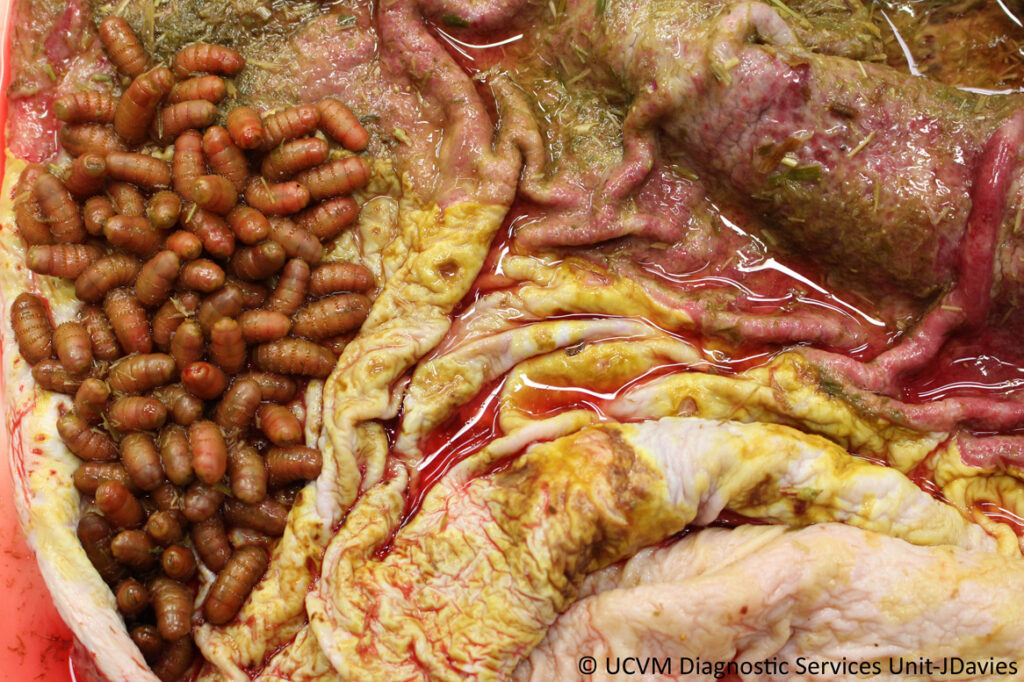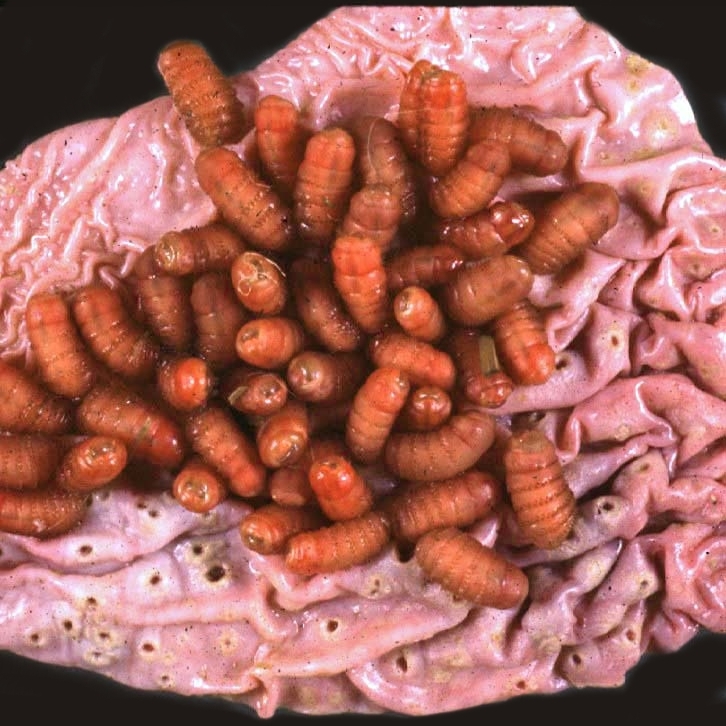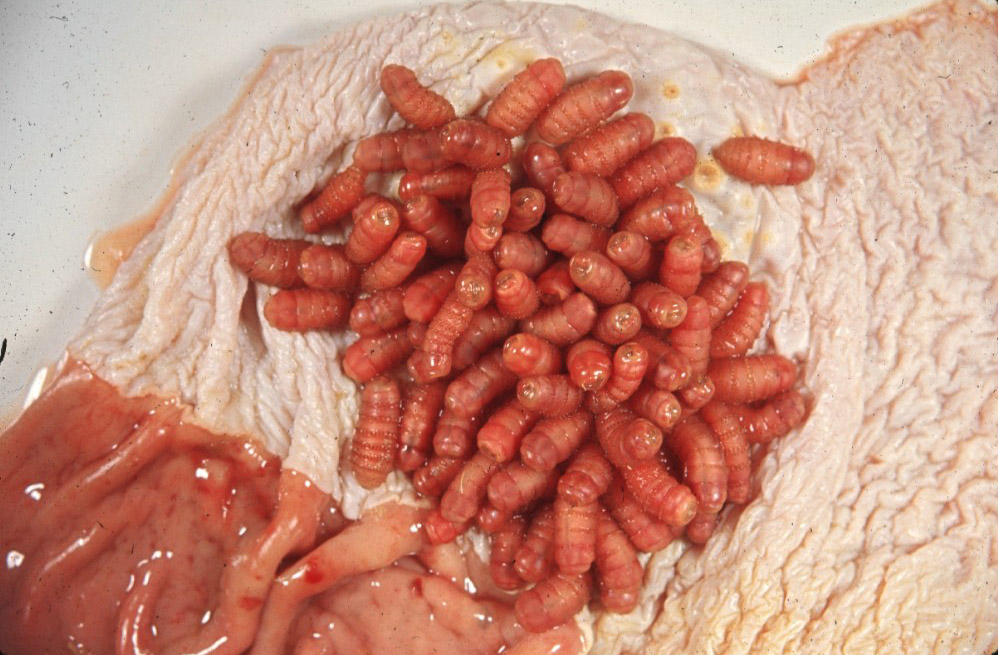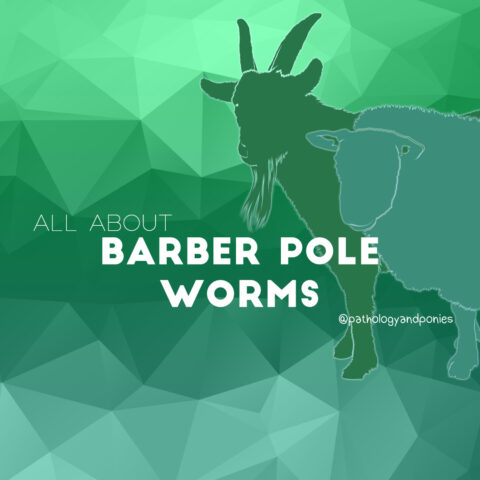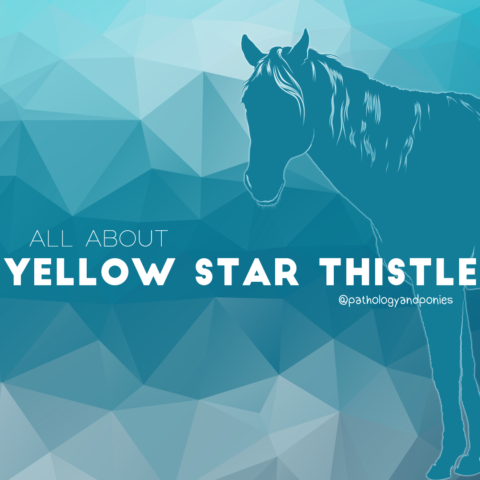Today’s path rounds are on 𝐆𝐚𝐬𝐭𝐞𝐫𝐨𝐩𝐡𝐢𝐥𝐮𝐬! Otherwise known as bot flies.
𝐖𝐡𝐚𝐭 𝐢𝐬 𝐢𝐭?
𝐆𝐚𝐬𝐭𝐞𝐫𝐨𝐩𝐡𝐢𝐥𝐮𝐬 larvae are the most common parasites of the equine stomach. There are six different species that can affect horses, but the most common ones are 𝐆𝐚𝐬𝐭𝐞𝐫𝐨𝐩𝐡𝐢𝐥𝐮𝐬 𝐢𝐧𝐭𝐞𝐬𝐭𝐢𝐧𝐚𝐥𝐢𝐬 and 𝐆𝐚𝐬𝐭𝐞𝐫𝐨𝐩𝐡𝐢𝐥𝐮𝐬 𝐧𝐚𝐬𝐚𝐥𝐢𝐬. In their adult form, these flies are frequently seen buzzing around livestock.
𝐖𝐡𝐨 𝐠𝐞𝐭𝐬 𝐢𝐭?
Any horse can get this! It is extremely common for horses to have some amount of bots within their stomach.
𝐇𝐨𝐰 𝐝𝐨 𝐟𝐥𝐲 𝐥𝐚𝐫𝐯𝐚𝐞 𝐞𝐧𝐝 𝐮𝐩 𝐥𝐢𝐯𝐢𝐧𝐠 𝐢𝐧 𝐭𝐡𝐞 𝐬𝐭𝐨𝐦𝐚𝐜𝐡 𝐨𝐟 𝐡𝐨𝐫𝐬𝐞𝐬?
There are some species differences, but the basic life cycle is that the adults lay their eggs onto the horse’s lower body, legs or around the mouth, and then are licked off by the horse. From there, the eggs hatch in larvae within the mouth, migrate down the esophagus and take up residence in the stomach. Gross.
𝐖𝐡𝐚𝐭 𝐝𝐨 𝐭𝐡𝐞 𝐥𝐚𝐫𝐯𝐚𝐞 𝐝𝐨 𝐢𝐧 𝐭𝐡𝐞 𝐬𝐭𝐨𝐦𝐚𝐜𝐡?
Once in the stomach, the larvae fasten themselves to the stomach wall via mouth hooks, where they bore into the mucosa and feed on blood and feed material. They will live their quite happily until they are ready to become adult flies, at which point they will let go of the stomach wall and pass into the outside world along with the horse’s feces. Extra gross.
𝐖𝐡𝐲 𝐢𝐬 𝐭𝐡𝐢𝐬 𝐚 𝐩𝐫𝐨𝐛𝐥𝐞𝐦?
Gasterophilus larvae generally don’t cause issues for horses. Most horses will live quite happily with their little larval friends in their stomach. That said, the larvae do cause small areas of damage to the stomach wall that may be problematic in severe infestations. These small areas of damage are usually ulcerations, which can be uncomfortable for horses (see our post on gastric ulcers!). Because the larvae migrate through the mouth, they can also cause small lesions that can lead to oral pain. Usually these horses will have chewing problems, irritation of the lips and gums, and may salivate excessively.
𝐇𝐨𝐰 𝐢𝐬 𝐢𝐭 𝐝𝐢𝐚𝐠𝐧𝐨𝐬𝐞𝐝?
It is pretty much assumed that all horses have some degree of bot larvae infestation. If there is a suspicion of severe infestation, then 𝐠𝐚𝐬𝐭𝐫𝐨𝐬𝐜𝐨𝐩𝐲 (a long camera passed into the stomach) can be used to visualize the larvae directly.
𝐇𝐨𝐰 𝐢𝐬 𝐢𝐭 𝐭𝐫𝐞𝐚𝐭𝐞𝐝?
Thankfully, Gasterophilus are very responsive to our typical deworming protocols! So one treatment is generally sufficient to remove these little friends.
𝐖𝐡𝐚𝐭 𝐚𝐛𝐨𝐮𝐭 𝐩𝐫𝐞𝐯𝐞𝐧𝐭𝐢𝐨𝐧?
As mentioned previously, the flies lay their eggs on the horse’s legs and body. These can be seen as little yellow specks that are quite difficult to remove! Owners that are concerned about bot fly burden can remove the eggs with a bot knife routinely, to prevent the eggs from making it into their equine friend.
𝐏𝐡𝐨𝐭𝐨𝐬
1-5) Various photos of bot fly larvae in the stomach of horses.
𝐒𝐨𝐮𝐫𝐜𝐞𝐬Maxie, G. Jubb, Kennedy and Palmer’s Pathology of Domestic Animals, Volume 2. Sixth Edition.
Photos 1-3 courtesy of University of Calgary Diagnostic Services Unit.
Photos 4-5 courtesy of Noah’s Arkive.


